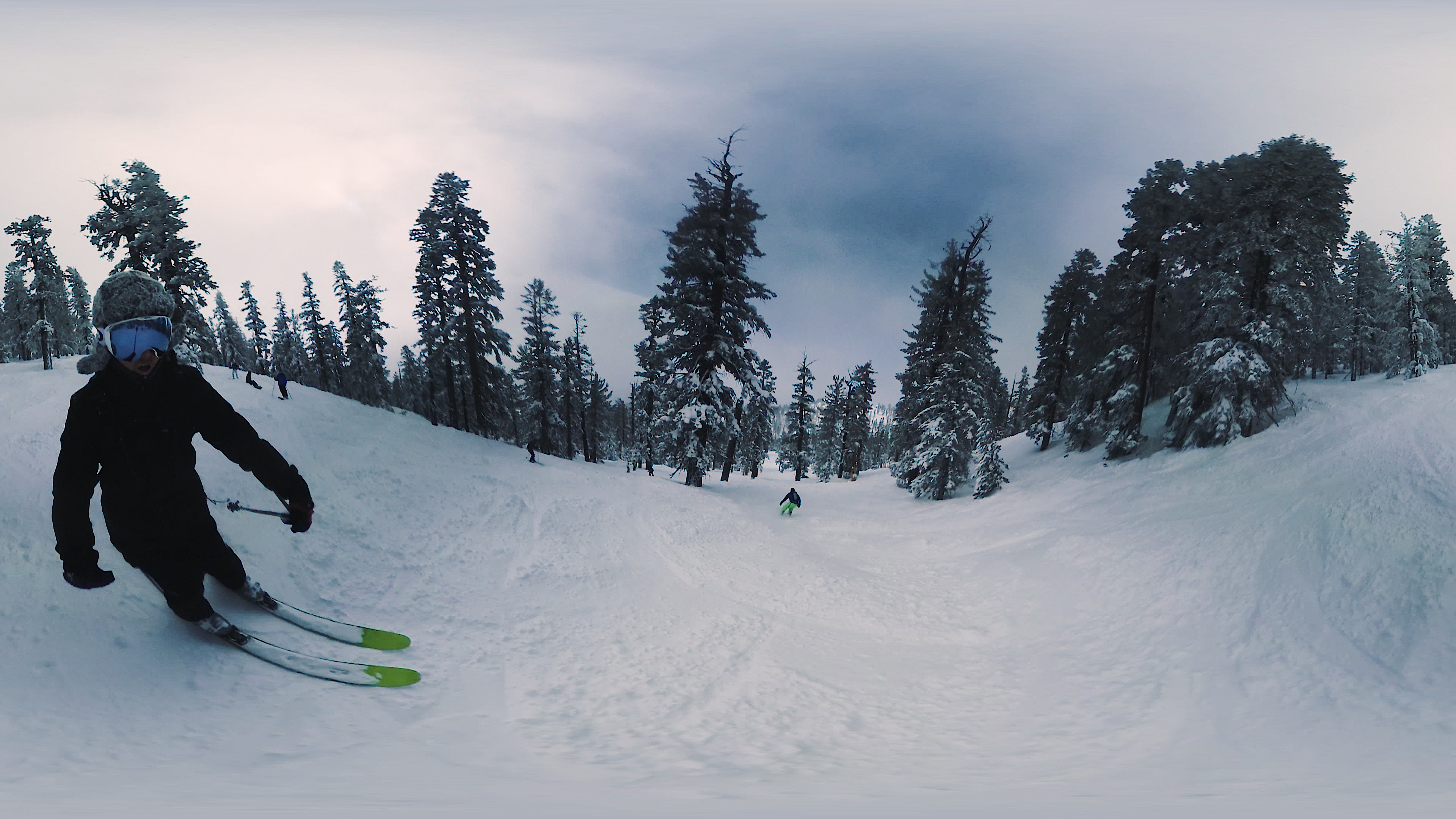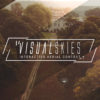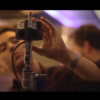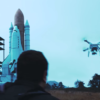Intro:
In February 2017, I made a short trip to South Lake Tahoe, California, to visit friends and ski! Along with me, I took a couple of the new Nikon Keymission 360° cameras…
I have worked with 360 cameras for a few years now – Shooting, stitching, warping, colour matching, removing stands, editing etc … 360 footage has always been a nightmare! So to be honest, I normally leave the 360 video rig at home. Knowing that the KeyMission 360 does all the stitching in camera and having used it extensively on a previous project, I thought I’d put it through its paces on the slopes! See Results below:
360° EDIT:
2D EDIT:
Equipment used:
Nikon KeyMission 360:
Monopod mount:
Easy to use and quick to set up. Handy 1/4inch thread on the other end, which is great for compatibility with other cameras…
MicroSD Cards:
I always use Lexar 32gb cards, I have never had one die on me… Sandisk cards, on the other hand, have failed on me many times. The keyMission requires cards with a ‘U3’ for ultra fast transfer speeds.
Anker USB Powerbank:
I never leave home without them! High amperage means quick charging. I keep all my devices topped up with one of these.
In the field:
Using the camera is straightforward. After you have set your camera settings with the app, you can just hit record when you want to capture some action. Mounting the camera; I wanted to shoot ‘hand-held’ and for it to be as light as possible, I didn’t want the camera to get in the way – I chose to use the Nikon extendable ‘selfie’ stick to shoot all of the above footage, which worked great, as I could just fold it back up and put it in my pocket when I wasn’t shooting with it. I also mounted the camera to my rucksack with the camera looking over my head, I chose not to use this shot as it didn’t work as well.
The camera died on me a couple of times… I put it down to the cold and kept the cameras in my jacket or plugged into a battery pack. Which kept them going in the end.
Editing the footage was also straightforward, as there is no stitching required, you can just chuck the clips into premiere and start editing. However, there is a serious amount of post involved to produce a decent 360 video. i.e. Stabilisation, grading, cleanup… Every shot was captured handheld – In order to make the footage viewable, it all needed some serious stabilisation.
Additionally, the plastic protective lenses also seem to add a vignette around the edges of both lenses, which makes the stitch more obvious. I reduced this with a mask and some colour correction.
Finally, In the edit, you have to choose which direction the camera is pointing and level the horizon. To do this I use Mettle’s Skybox tools for Adobe’s Premiere pro.
Changing the game:
I believe that 360 cameras like this are set to be a game changer for action sports. For the following reasons:
- YOU DON’T NEED A GIMBAL
Bold statement, however, 360 cameras capture the whole world around them all the time. The world doesn’t move, only the camera does. By calculating the rotation of the footage you are able to reverse the cameras rotations (wobble) and apply it to the video footage, effectively stabilising the video and removing any unwanted wobble without cropping your image at all! The only movement that should be left is translation, motion blur and rolling shutter. If you can shoot at higher frame rates the footage will be even smoother. A bulky heavy mount is the last thing that any extreme sports enthusiast or expert wants to wear or use, it gets in the way! Which will make 360 cameras more appealing to users and filmmakers… And cheaper!
- Capture all the views – Multiple output platforms.
You can edit a regular ‘GoPro style’ video from a 360 video. Giving creators multiple options for output platforms from one camera source.
Check out Jeb Corliss’ crazy rig of cameras:
This could be replaced by a single camera. Resolution is obviously a key component, from a 4k video you will only just have a ‘hd’ 2d frame on youtube… The next generations of 360 cameras will naturally increase/improve quality and resolution. Cameras only get better!
You can also create the well used and popular ‘miniplanet’ effect with a 360 camera. As seen recently in Kendrick Lemar’s ‘Humble’
- NO MOUNT VISIBLE – EVER!
If you mount the cameras in a specific way you are able to hide the mounts in the ‘blind spots’ of the camera or use paint in post to clean the mounting point. As most 360 cameras are built with more than one lens, the lenses will naturally be offset from one another. This is what causes ‘stitch lines’, but can also be used to your advantage if you know how.
Finally, a 360 camera can capture never before seen angles… Once the scene is stable and if the camera was mounted correctly, the result can be jaw-dropping. As it can look as if the camera is simply ‘floating’ in front of you… Many people will say ‘where is the camera?’ or ‘where did you mount it?’.
Round off:
Cameras like the Keymission 360 are inherently great fun to use; capturing unique and versatile footage which can be used in many different ways. Other 360 cameras have the added step of stitching before you can edit which makes them less appealing. 360 cameras like the KeyMission also allow for shooting with less bulky and cheaper equipment – which is great for everyone.
The stitching being taken care of in-camera is a great step in the right direction for 360 content… One less thing to worry about is always good! Following this update, I foresee that stabilisation will also be taken care of by the camera. Using internal imu sensors etc. The Snapbridge app already gives a ‘stabilised’ preview of what you are shooting regardless of the orientation of the camera. I’m sure that stabilised video will be a firmware update for the keymission.
The overall quality of the keymission is better than the other dual lens 360 cameras I have used, such as the Richo theta, the Samsung gear and custom rigs. The gear, for example, can only record for 15 mins max before it overheats! I often get 40 + mins out of the Keymission! Although, currently, the resolution does compare to the Omni (obviously, it’s tiny!) – That said, the stitching on a gopro omni is terrible, due to the large offset of the cameras. Swings and roundabouts.
Dual lens 360 cameras have to be small… which means they need ultra wide lenses and small sensors. Having such a small form factor also means that the cameras are prone to overheat, which can also deteriorate the footage. These factors will only get better. That said, the KeyMission does a great job on both the resolution and overheating sides. It has outperformed my expectations both when using it personally and commercially. See Biffy’s Live performance at NME’s nominee’s party here: https://joevfx.co.uk/portfolio/biffyclyro360/
As a user and professional in this industry, I truly believe that 360 cameras are set to be the most versatile capture platform; capturing footage for many outputs etc. The fact that you can shoot without a gimbal capturing smooth footage and multiple output platforms are why I foresee this medium being used more and more in action sports and other areas. I can’t wait for Nikon’s next 360 camera!
Let me know what you think about the videos and feel free to comment. Thanks for stopping by!







